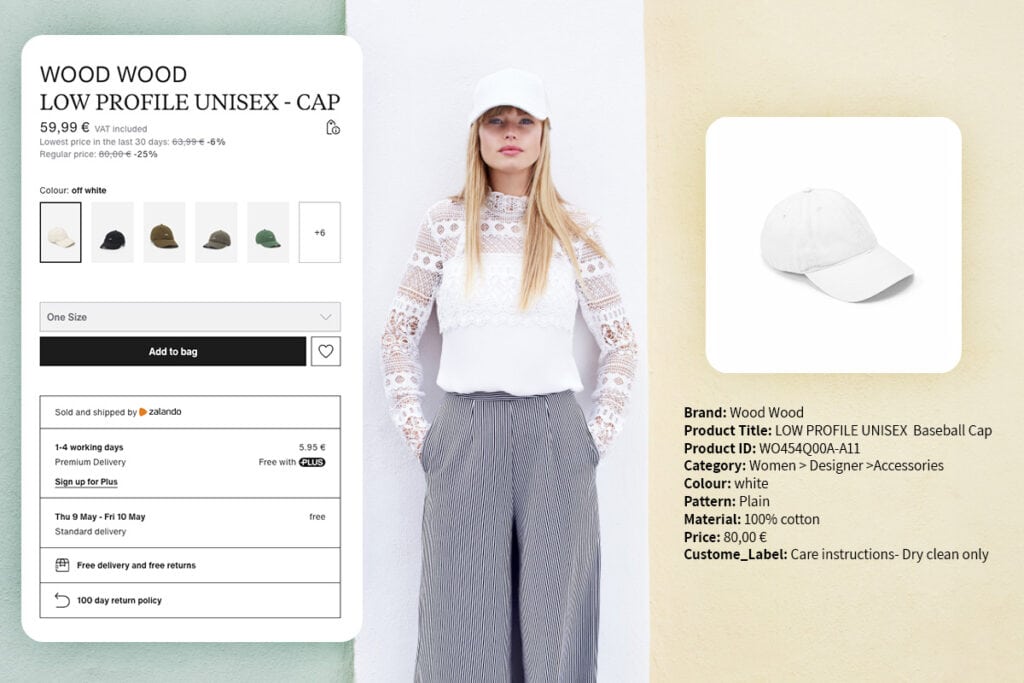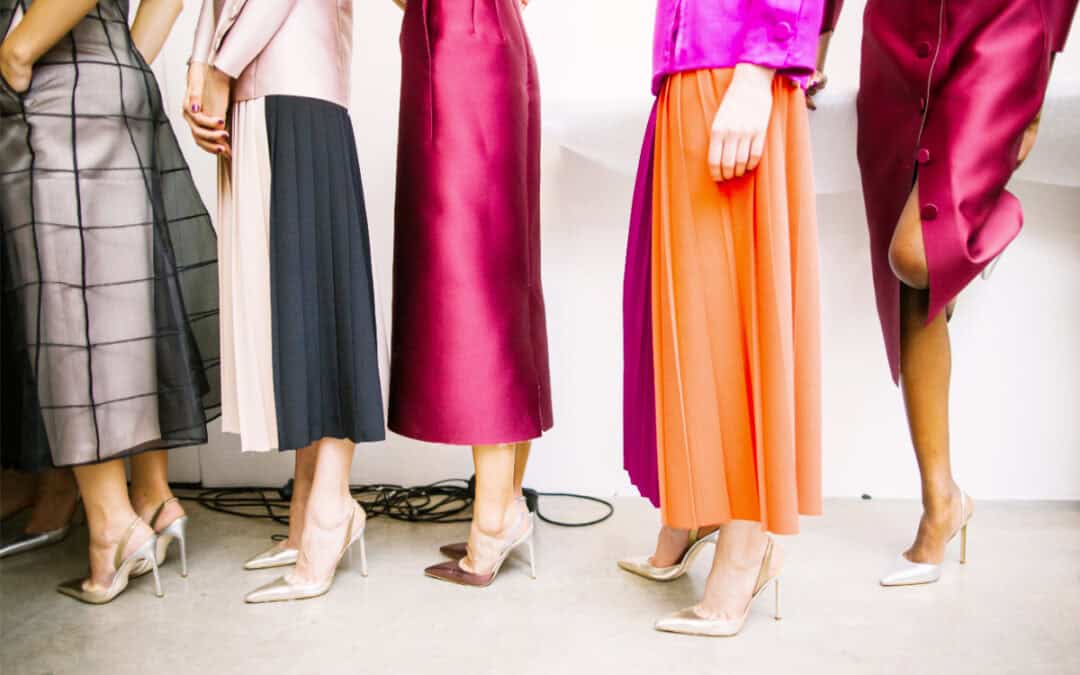The definition of luxury changes when you move from the physical world to online shopping.
Consumers who go looking for luxury fashion in person can appreciate a well-designed space devoted exclusively to a single brand.
They might admire the tasteful décor that sets off the clothes to even greater effect.
An in-person luxury shopping experience also tends to be highly curated – in other words, retailers might only need to showcase their finest goods in order to appeal to discerning customers.
Why you should sell through an luxury fashion marketplace
The potential to grow revenues through digital channels requires luxury brands to rethink all of these principals and focus on an entirely different kind of experience.
The key priorities for eCommerce shoppers, including those focused on luxury fashion – are speed, convenience and accurate information.
Consumers expect to find the luxury brands they want instantly. They want as many options as possible in order to make the best choice. And when they’re considering a particular item, they need to feel confident that all the details – especially availability – is up to date.
This helps explain why elite brands are increasingly expanding their digital presence beyond their own web sites and featuring their products through luxury fashion marketplaces.
Far from losing any perception of prestige, adding products to a luxury fashion marketplace shows a brand recognizes that true luxury in eCommerce is all about making it easy to get what you want.
That said, luxury brands should still put the same care and attention into their presence within online marketplaces as they do setting up a physical location.
With the right approach to optimization, your brand will be:
- Discovered by more consumers
- Driving more conversions and revenue
- Encourage repeat visits and positive word of mouth
Optimizing eCommerce for a luxury fashion marketplace
The Internet is already a busy place, where it can be difficult for particular brands to stand out. A lot of the business you drive through your own website will depend on traffic you get through search engine optimization (SEO) and paid marketing tactics.
Joining a luxury fashion marketplace brings you into a more focused environment where consumers are looking for a wide range of brands to explore. However this also means you’ll want to differentiate yourself from other retailers selling within the same space.
How luxury brands can stand out in an online marketplace
If you operate physical stores, you probably thought carefully about how they were built and ensured they were easy to stroll through without getting lost. The same principle applies online.
Introduce yourself (and reinforce your brand identity)
Your logo is only one element that tells consumers who you are and why you represent a brand worth exploring.
Remember that some of those browsing a luxury marketplace may not be familiar with you at all. Make the best possible impression by including information such as a condensed version of your mission and any relevant details about your history and reputation.
Others may come on a luxury fashion marketplace hoping to find your brand included, and these details will reassure them the experience you’re offering will be consistent with what they’ve seen elsewhere.
Let each product description tell a compelling story
Offering basic details such as sizes, colors and pricing are just a starting point when you’re positioning your products through a luxury clothing marketplace.
Converting browsers into buyers is all about making them understand your brand’s unique approach to developing quality apparel and accessories. This can include the materials you use, the craftsmanship you apply and more.
The copywriting you do here can make the difference between attracting a customer who stays with you for life and one who chooses to browse another brand instead.
Ensure every image offers maximum appeal
You don’t always need ideal lighting when you’re selling products in a physical store because shoppers can touch and feel them directly. In a luxury clothing marketplace, pictures represent the most powerful way for you to convey the beauty and style of every item.
Choose images that not only provide a clear view of what you’re selling but create a sense of aspiration. This can mean showing products from different angles and incorporating lifestyle elements, such as a model wearing a product in an attractive everyday setting.
Use data analytics to inform the most meaningful changes
Retailers always keep a close eye on the number of products they sell, but being on a luxury marketplace can offer other data points that can help you continuously improve how you showcase your products.
Look for ways to measure the time spent on each product, shopping cart abandonment rates and anything specific provided by a marketplace operator to fine-tune your approach. The more data-driven you can be as a retailer, the more likely you’ll be able to reach or even exceed your eCommerce goals.
The best luxury fashion marketplace options for premium brands
Your sales strategy for luxury marketplaces can begin by identifying which platforms align best with your ideal customer profile and brand. In doing so you’ll also want to take into account the level of active users each platform offers, seller requirements and the options for handling shipping and returns.
Some brands start by integrating with a single luxury marketplace and taking a “test and learn” approach before adding others. Once you’ve learned what’s involved in getting set up – and when you have partners with the technologies to help automate the process – it can be easier to expand into other luxury clothing marketplaces over time.
Some of the most common platforms where other luxury brands are actively selling right now include:
Zalando

It’s already one of Europe’s most popular online destinations for luxury fashion, but Zalando is continuing to make changes that could strengthen its market position even further.
In early 2024, for example, Zalando announced it is working to enrich some of its existing categories, including Sports and Kids & Family through technologies that will personalize the inspiration it provides. Tools like Zalando Assistant, meanwhile, is allowing commerce to become more conversational – almost akin to the expert help luxury brands have traditionally provided in-store through expert associates.
Zalando has also said it is opening up its logistics infrastructure, software and service capabilities to help retailers sell more effectively to customers.
Asos
Luxury clothing isn’t limited to new merchandise. Many shoppers go online looking for vintage collections and the latest collections at the same time. Asos has a marketplace that has been successful in both kinds of clothing.
Brand awareness for the Asos marketplace is 65% in the U.K. alone, and 80% of its customers tend to be loyal to the brand. That could mean a lot of return visits for luxury brands who feature products on the Asos marketplace.
In the meantime, Asos in early 2024 appointed a new CFO whose eCommerce experience includes a stint at Amazon, suggesting Asos will become even more competitive in the fashion sector.
Farfetch
From the moment it launched in 2007, Farfetch has been focused on acting as a trusted partner to brands that want to be included on the top global luxury fashion marketplace.
This means Farfetch doesn’t carry any inventory of its own but provides third-party services to help other luxury brands find sales success.
In early 2024, Farfetch was acquired by South Korean eCommerce giant Coupang, which said it would invest in helping the marketplace to further improve the customer experience for luxury shoppers around the world.
Bet on the most sought-after luxury brands and increase sales
The best sales strategy for luxury marketplaces always takes into account what other premium brands are doing online. Even as you begin uploading your products to the kinds of platforms we’ve just described, you should continue to monitor and assess competitors whose activities could provide insight on eCommerce best practices as they emerge.
Some of the parameters to keep in mind here:
The most searched luxury brands online
Louis Vuitton, Gucci and Dior are the “big three” in terms of what consumers are keying into Google, according to recent data. Pay attention to the keywords these brands are using to rank in search results, and how you might weave them into your own copy.
The most profitable luxury brands online
LVMH scores the top spot in this category as well, followed by luxury brands such as Dior, Hermes and EssilorLuxottica, among others. While profitability is driven from many different facets, these brands represent the ideal in how they balance supply and demand as they serve style-conscious consumers
The most in-demand luxury fashion brands online
It may be a subjective area, but shopping app Lyst’s most recent quarterly index said Prada is the hottest luxury brand, followed by Miu Miu, Loewe and Bottega Veneta. Use this kind of ranking to consider the most creative approaches luxury brands can take in how they market themselves online as you prepare your product listings and images to upload onto online marketplaces.
The most important luxury fashion marketplace best practice of all
Luxury brands have to be good at many different things at once: designing products, creating compelling marketing content and providing outstanding customer service.
That means they shouldn’t be bogged down with the technical aspects of getting their products on a luxury clothing marketplace. Automating this process through a product feed management solution is the smartest move you can make as you prepare to boost your long-term eCommerce sales. Connect with us to find out how we can assist with integration across more than 50 of the top marketplaces in the world.

